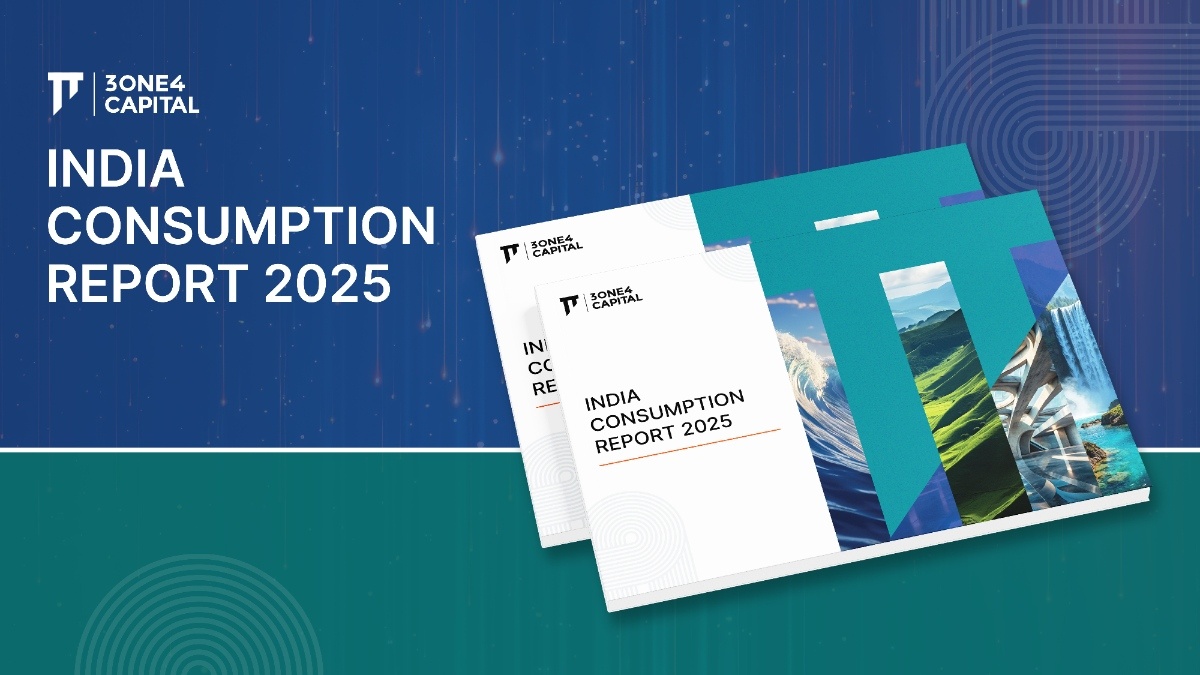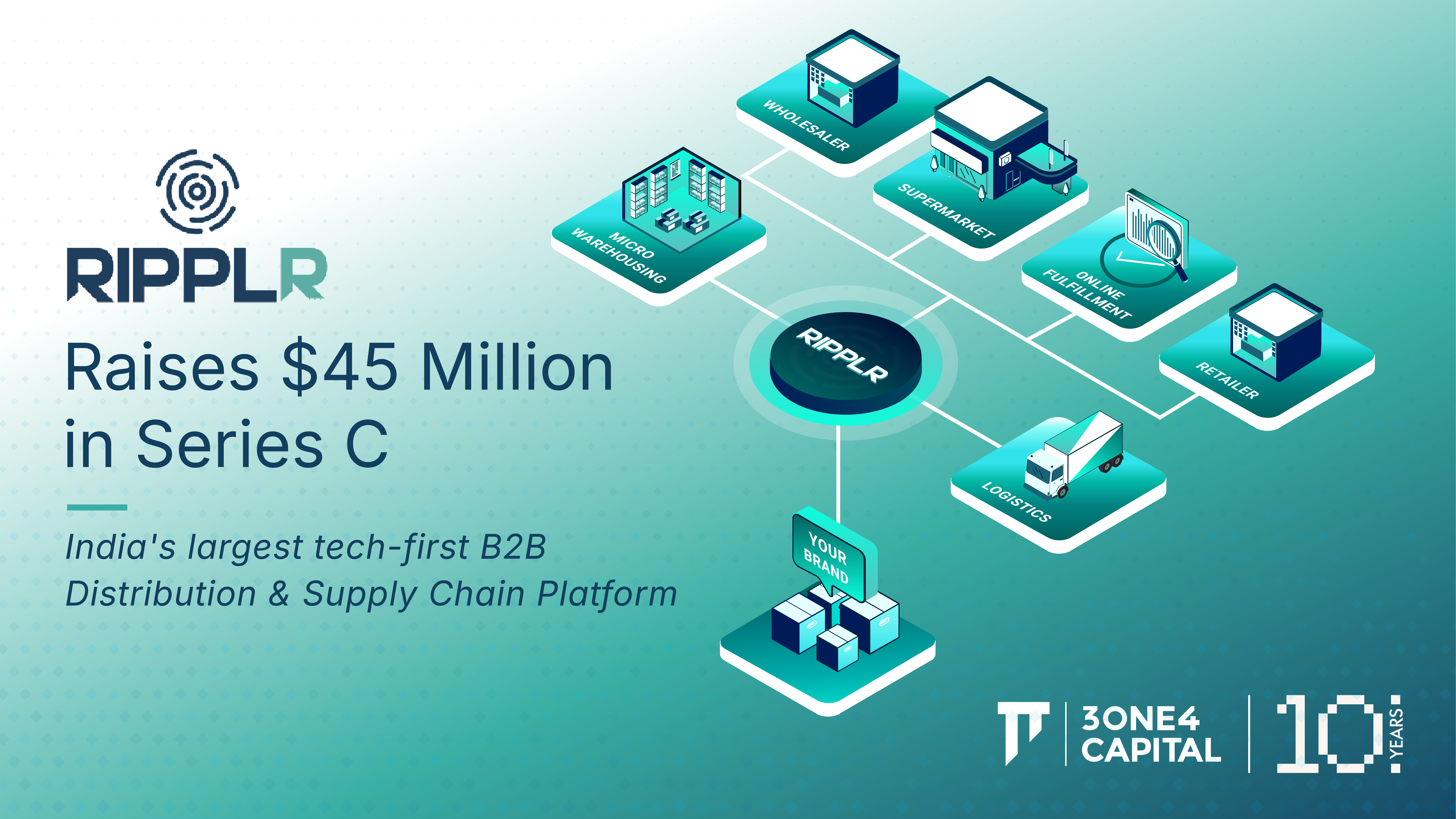
Building For India 2.0: Breaking GTM
We’ve compiled some interesting insights from our last ‘Building for India 2.0’ session moderated by Ayushi Garg (Growth & Capital, 3one4 Capital).
Seasoned entrepreneurs, Mayank Bidawatka (Co-founder, Koo India), Vishal Chopra (Co-founder, WeRize) and Jani pasha (Co-founder, Lokal), who have scaled businesses rapidly, unveil what it takes to build for the next billion users.
Recommended reading for founders, growth leaders in early-stage and hyper-growth startups looking to venture beyond tier 1 cities in India.
As startups in India begin venturing into newer markets, specifically beyond tier 1 cities where the market and audience are unique, it is quintessential for a multi-pronged approach to cracking GTM. On 10th December, we invited Mayank Bidawatka (Co-founder — Koo), Vishal Chopra (Co-Founder — WeRize) and Jani Pasha (Co-Founder — Lokal) to join us in an interactive conversation comparing and contrasting their journeys in breaking barriers to GTM in tier 2 and 3 cities in India. Following is a summary of the discussion that followed.
The Big Misconceptions
In India, consumers can be divided into 3 different segments on the basis of income and geographical proximity.
We have about INR 5 Cr people on top of the income pyramid, in metros and larger cities, who are typically white collared employees, are well educated, and command salaries of ~INR 30K and above. This is the segment that is of prime importance for private sector banks, mutual funds, insurance and of course, a host of startups in India. The other extreme, which is more than half our population, is characterized by people living in rural towns and villages in India. It is safe to say that this segment becomes uneconomical for the aforementioned types of companies offering products and services to a tier 1 audience.
Vishal (Co-founder WeRize) and Mayank (Co-founder Koo) methodically unveil a missing middle that is often underserved.
Vishal expounds that a large middle segment forms the third category that has a growing wallet but does not seem lucrative for private players. This customer segment shouldn’t be confused with a segment that faces paucity of resources to avail services. The thing to note here is that a person earning INR 20K in a small city forms the equivalent of a person earning north of INR 40K in an urban city primarily owing to differences in cost of living. While the AOV or LTV may be lower in certain segments, they form a significant untapped opportunity owing to their sheer size.
Mayank adds, when we think about regional language users living in tier 2 and 3 cities, they are perceived to be economically disadvantaged people living in inaccessible places, cut off from the internet world. However, in reality, there are millions of people who are well versed with using many of the apps an urban consumer uses.
The next big opportunity in India, where a sizable chunk of our GDP comes from, is this segment of consumers living in tier 2 and tier 3 cities in India.
So what does it take to crack into this segment? Does Mainstream digital marketing work?
The short answer is — It depends on the product.
From Vishal’s point of view — On the supply side of things, the most effective means of getting your product through to tier 2 & 3 cities comes down to agent-led models. While this has been tried by many, it has historically been done by having fleet-on-street to manage agents in different cities. WeRize, on the contrary, built their network of social partners without a physical presence in any of the 1000 cities they operate in, through seamless digital experiences for the partners on their platform.
Vishal adds, “ We initially called up LIC & CSC agents to onboard them as social partners for WeRize. In 5–6 months, these social partners began seeing value in the platform through the revenue they make. We did not spend a single penny on digital marketing to acquire these partners. A large chunk of this is attributable to word of mouth”
On the demand side of things, financial services remains a category that will require a high-touch strategy owing to the inherent complexities in user education.
“While our target audience is a growing segment with appetite and propensity to pay for products, they require guidance — especially for buying complicated financial products they aren’t aware of. While they use smart phones, a significant segment use it for basic transactions like making a payment and using social media apps like whatsapp and facebook.” He also calls out that the low ticket sizes and conversions from digital marketing make CAC inefficient for this type of product.
On the other hand — Lokal’s journey has been quite different in terms of their engagement with their audience. Lokal built their audience on the back of digital channels. Jani, co-founder, Lokal shares that the audience they target are extremely social; word of mouth becomes the best means for expanding the user base after they hit a critical mass through digital channels.
The second important piece has been fine tuning use cases for the app itself. Jani gives the example of building in use cases such as matrimony listings and job listings. As users begin to find true value in a product, questions around user acquisition and retention begin to fade.
“Look deeply into the patterns exhibited by your target audience and you’ll derive insights to build a product that caters to their needs” — Jani
Bridging the gap between ideas and users — Deliberate UI / UX to ease the learning curve
“It is easier to acquire, hard to retain, and harder to explain” — Mayank
For Koo and Lokal, users in this market segment are open to try new things and experiment so acquisition isn’t the biggest challenge. Retention becomes a challenge simply because the learning curve can be steep.
For example, user onboarding onto an app for an urban user might entail a simple image with instructions. While the same might require a gif, a video and an audio for a regional-language app user. Clearly a fair degree of hand-holding happens through the user’s journey on the app.
Mayank shares his experience through one such example: “It’s quite natural for me to build out an app for an urban audience because all you need to do is build an app in English. But there are several complexities that arise with a regional language user. For an urban user — Like, share, follow buttons are fairly intuitive. While in Koo, the like button glows after 3 or 5 seconds after a piece of content is consumed. This is essentially to nudge the consumer to hit the like button if they liked the content they just reviewed, once that’s down, there’s a queue for the share button. These are things you won’t find in any Western product as we realize our audience needs to be informed on what that means and how that translates to their feeds.”
While Koo’s initial “follow percentage” was in the single digits, over time, they consciously innovated on simplifying the learning curve for their users, now translating to a whopping 70–75% follow rate.
Go down to the basics, keep the messaging simple, and throw away a lot of your assumptions when you are building for this audience.
Understanding subtle differences and creating deeper experiences for an audience is essentially what differentiates Facebook from the likes of Myspace.
“We explain Twitter as a micro-blogging app across the globe. Users understand micro-blogging because they have used blogging earlier. If you have never done blogging before, you won’t have any idea what micro blogging is.” — Mayank
Koo tackled this through ad campaigns that simplified what a user could do within the app —
“Ab dil me jo bhi ho, Koo pe Kaho” (Translation: If there’s anything in your heart, say it on Koo”)
What worked in the US isn’t going to work here — Appreciating unique behavior and building true value
Lokal didn’t expand on day 1. When they launched they were only in 2 districts. Over the last three years they have built a playbook that details out parameters for picking a location such as GDP per capita, the population, smartphone density, and local business affinity. Once they picked a location, they grew their user base to a point where word of mouth starts kicking in. It is at this point that they launch their location specific use cases to make it more valuable to their customer base and eventually monetize on.
“We take care of the differences in locations by ensuring that our content creators are from that specific location and that our use cases are location specific. For example, in one location, a clothing business may be an important element in the community while in another, the prominent users are coal mine workers. What’s common across this audience is a natural curiosity to know what happens around them. It is this trait that we tap into, to launch our products in a new location.”
Tackling The Monetization Puzzle
“When you deliver tremendous value, this audience will pay” — Jani
6 years back, no one could imagine that people would be paying INR150 every month for a service like Jio. Today we see them disrupting the market because they deliver incredible value. In the case of Lokal, the company identified specific use cases for which their audience would loosen their purse strings.
Jani shares — “A typical use case that was very surprising for us was people wishing each other happy birthday on local newspapers, TVs, radio, through banners which can cost up to INR 5000 . This was something we are able to monetize on Lokal today as we tap into some of the unique / emotional aspects in this audience.”
Similarly, SMEs paying Lokal today, would post jobs in their town’s local newspapers and would end up getting 9–10 applicants in a week’s time. With Lokal they were able to generate 10x the number of applicants than before. When that value gets unlocked, revenue can be created. This has been key to the company’s incredible feat of being able to achieve profitability in 40 of the locations they operate in. Interestingly enough, this has resulted from experiments in building deeper experiences and understanding their audience as opposed to a conscious focus on monetization!
Final thoughts
There isn’t a one size fits all solution to crack into tier 2 and tier 3 cities in India. However a winning strategy involves:
- paying close attention to the subtler behavioral aspects of a product’s core audience and building a value proposition that is hard to ignore
- shifting away from assumptions about this audience and avoiding replication of models that may have worked globally
It’s not important to get 100 things right. But there are going to be 2–3 critical pieces in your business that you have to hit out of the park and do better than everyone else. This is what becomes the common thread across companies capturing this market.


.webp)












